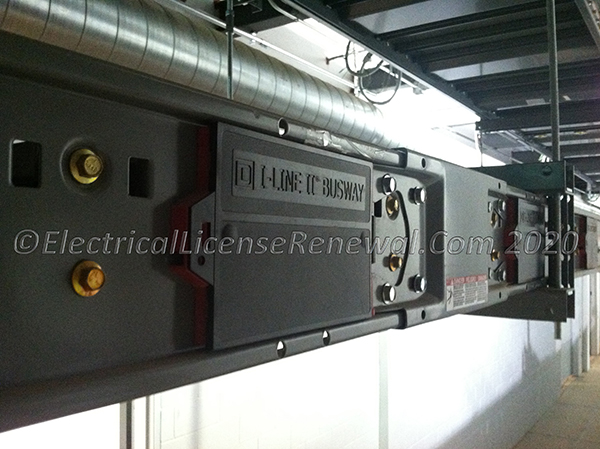Article 368.

MA amendments.
368.8. Insert a new Section 368.8 in Part I of Article 368 as follows:
368.8 Tests Prior to Energizing. Busway system joint tightness, phasing, and insulation resistance shall be verified -by test prior to energizing the system for the first time. Joint resistance shall be evaluated by a qualified person using equipment identified for the specific function. A written record of these tests shall be made available to the authority having jurisdiction.
368.14. Insert a new Section 368.14 in Part II of Article 368 as follows:
368.14 Protection from Liquids, Moisture and Other Contaminants. Busway shall be protected from liquids, moisture, and other contaminants or corrosion that may result in electrical failure.
(A) During Construction. Indoor busways shall be protected from moisture during storage as well as during or after installation. Special consideration shall be given to riser busways to protect them from moisture from uncompleted roofs, walls, etc.
Outdoor busways shall be treated the same as indoor busways until after busway is properly installed, as it is not weather resistant until completely and properly installed.
Busway shall have the exposed ends of uncompleted runs protected to prevent accidental contamination during the construction period.
(B) Protection from Snow Buildup. Outdoor busway shall be mounted in such a manner as to prevent snow or ice buildup forcing water into the busway through weep holes. This may require that consideration be given to horizontal snow or ice buildup or drifting of snow.
(C) Protection from Falling Liquids. Slant shields, drip pans, or other approved protective shields shall be installed to protect indoor busway in locations where there is a possibility of water spillage or dripping condensate from roof drains, water pipes, and the like.
368.56(B). Revise the rule in list item (2) and the exception to (B)(2) to read as follows:
(2) The length of the cord or cable from a busway plug-in device to a suitable tension take up support device shall not exceed 2.5 m (8 ft).
Exception to (B)(2): By special permission in industrial establishments only, where the conditions of maintenance and supervision ensure that only qualified persons will service the installation, flexible cord suitable for hard usage or extra hard usage or bus drop cable shall be permitted to extend horizontally greater lengths than 2.5 m (8 ft) where the longer length is essential for periodic repositioning of equipment. The flexible cord or bus drop cable shall be supported at intervals not to exceed 2.5 m (8 ft), and suitable tension take-up device(s) shall be installed at the end of the horizontal run to relieve strain in both the horizontal and vertical directions.
Click here to see the Massachusetts amendments to the 2023 NEC®.